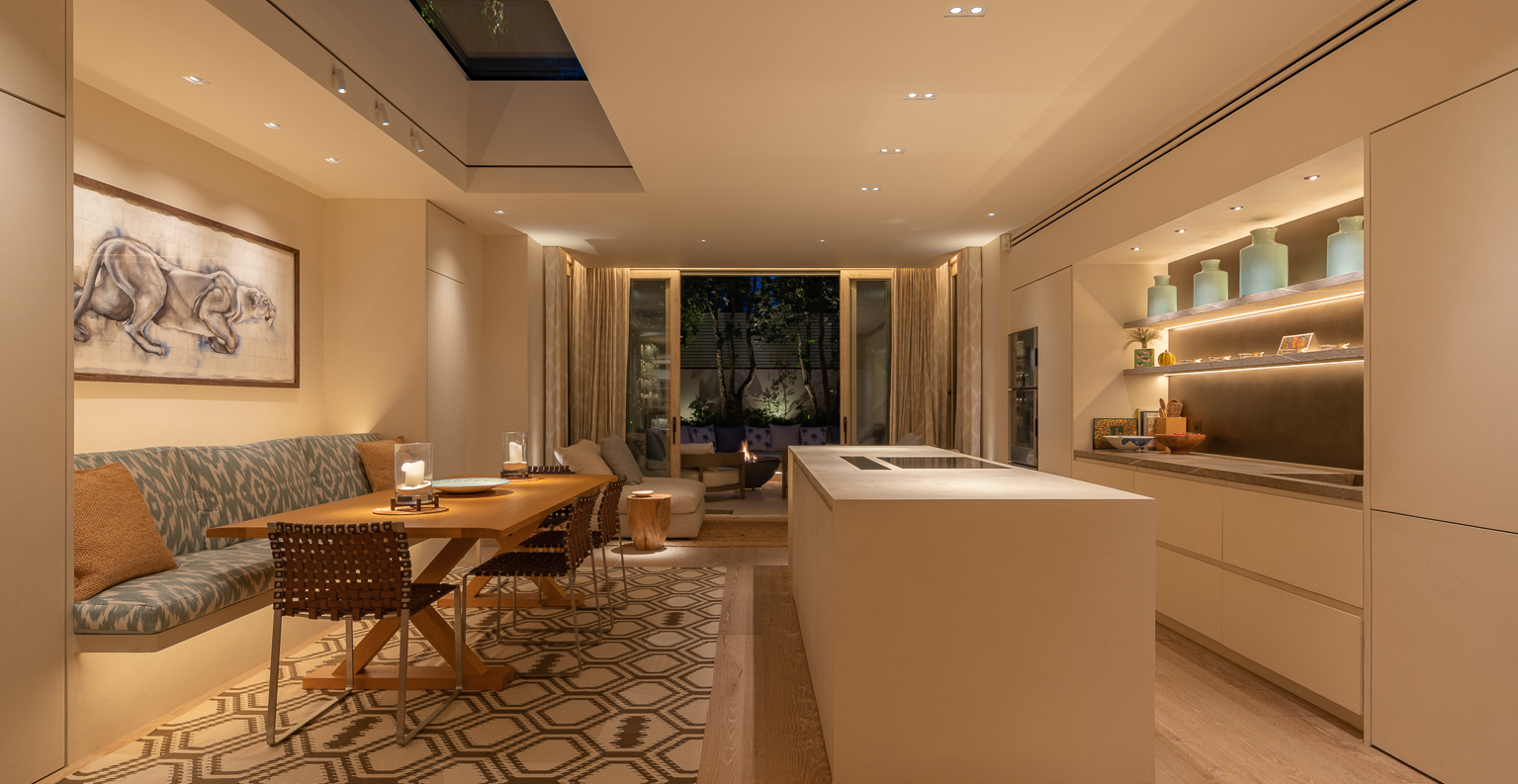
Creating an interior design project without a lighting designer is like going out for dinner and only eating what’s in the bread basket. The bread may be excellent, but you’re missing out on many more interesting dishes. Expertly placed lighting adds another dimension to a space, bringing an interior design project to life.
Great lighting creates depth and height, cosy spots, and draws attention to your most impressive areas. It’s all about the balance of light and shade and bringing new energy to an interior. An architect or interior designer may just draw a grid of downlights into their plans for your interior, which won’t do justice to what they have designed. Calling in lighting design experts to work in harmony with your interior designer or architect will maximise the impact of your space.
We asked Design Associate Sabrina Fiorina to highlight the importance of lighting in interior design.
HOW IMPORTANT IS LIGHTING IN INTERIOR DESIGN?
Lighting is as important as every other element of the design. Good lighting changes and transforms a space. We use light and shade to make a room feel comfortable but also dramatic and atmospheric. Let’s say we want to highlight an artwork on a wall, we need a downlight to hit the artwork but in combination with a darker area around – this then draws our eye to the painting.
Our skill is artfully combining downlights, uplights, wall lights, floor lights, hidden lights, feature lights, integrated architectural lighting, pendants and lamps to add vast interest and depth to each room. We apply different strategies for different solutions to create the ideal architectural lighting design solution. We may illuminate special features such as an occasional table with flowers using Polespring downlight with a narrow beam, but we combine it with more general highlighting options. Lighting a beautiful curtain fabric will be done in a different way to creating targeted bright areas for tasks such as cooking, reading, or working at a desk.
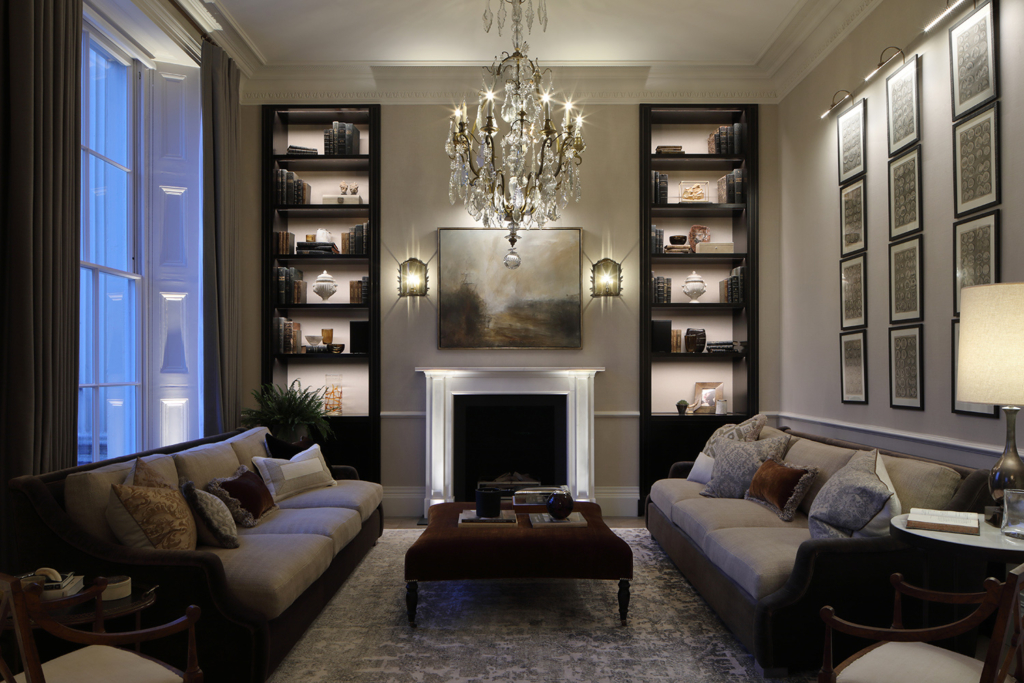
WHAT ARE THE FOUR MAIN TYPES OF LIGHTING IN INTERIOR DESIGN?
To create a well-balanced and inviting interior, it’s essential to understand and incorporate the four main types of lighting: ambient, task, accent, and decorative lighting. Each type serves a distinct purpose and, when layered together, can transform any space into a harmonious and visually stunning environment.
Ambient lighting provides overall illumination, ensuring that a space is uniformly lit. It creates a comfortable level of brightness without glare, allowing people to move around safely and perform tasks.
Task lighting is focused and bright, designed for specific activities such as reading, cooking, or working. It is usually implemented through desk lamps, under-cabinet lights, and pendant lights.
Accent lighting is used to highlight particular features of a space, such as artworks, plants, or architectural details. This type of lighting adds depth and dimension, creating focal points that draw the eye and add interest.
Decorative lighting fixtures, such as chandeliers and wall sconces, serve as artistic elements in themselves. While they provide illumination, their primary role is to contribute to the overall aesthetic of the space.
WHAT IMPACT DOES DAYLIGHT HAVE IN INTERIOR DESIGN?
Daylight is a crucial factor for all designers. Interior designers and lighting designers will monitor how daylight enters each space they work on – it will affect where everything is positioned. It’s as important as artificial light. In a living space with expansive glazing, daylight will pour in making it feel bright and open. So then we think how to handle the artificial light – and offer different options throughout the day. A grey afternoon in London looks very different to a bright sunny morning in Dubai and will require different lighting.
Architectural lights still play a role where there’s daylight. Use it to brighten dark spots in shelving, add brilliance to a task area or to highlight artworks. LED linear strips will bring a warmth to joinery and key features in your room and may be needed with the natural light to add focus and softness. The key solution is to manage lighting options for different times of day using a combination of daylight and artificial light. We can have pre-set options on a switch pad to achieve the optimum results.
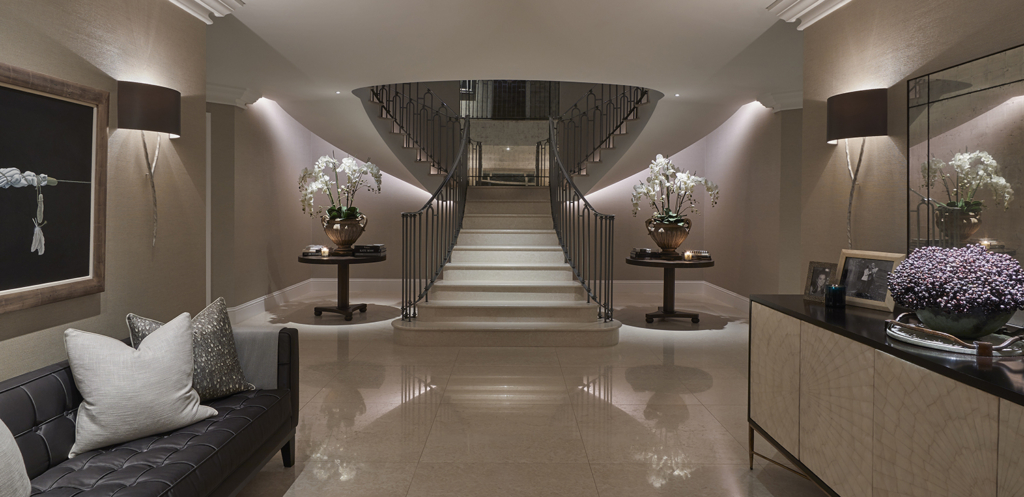
WHAT IMPACT DOES ARTIFICIAL LIGHT HAVE IN INTERIOR DESIGN?
Artificial light creates visual stimulation – we’re always drawn to the brightest point in a room, so we use artificial light to accentuate specific features in the space. In a kitchen, these might be flowers on a kitchen island or dining table which we’ll highlight. We will also bring focus to the room’s edges to broaden the perspective. We may add subtle light to vertical surfaces such as cupboards using perimeter lights, which will create reflected light off those surfaces.
Getting the functional task lighting right, to prepare a meal, make a drink, or simply see what’s inside the cupboards, is vital, too. Diffuse light is used for general warmth. A well-designed varied artificial lighting scheme will add brightness, moments of drama, layers and depth.
WHAT IS DECORATIVE LIGHTING IN INTERIOR DESIGN?
Decorative lighting – such as a dramatic pendant, interesting wall light or feature lamp – does more than add attractive objects to a room. Our eye may be drawn to a large and pleasing pendant over a table, but the work of a couple of downlights either side will really add to the quality of the light.
Decorative lighting is important but a good lighting designer will combine it with architectural lighting for the best results. For a soft late-afternoon cosiness, you may just turn on the decorative lighting to watch TV, or read your book under a pretty lamp, or enjoy an aperitif. At other times, you will need a fuller combination of lights.
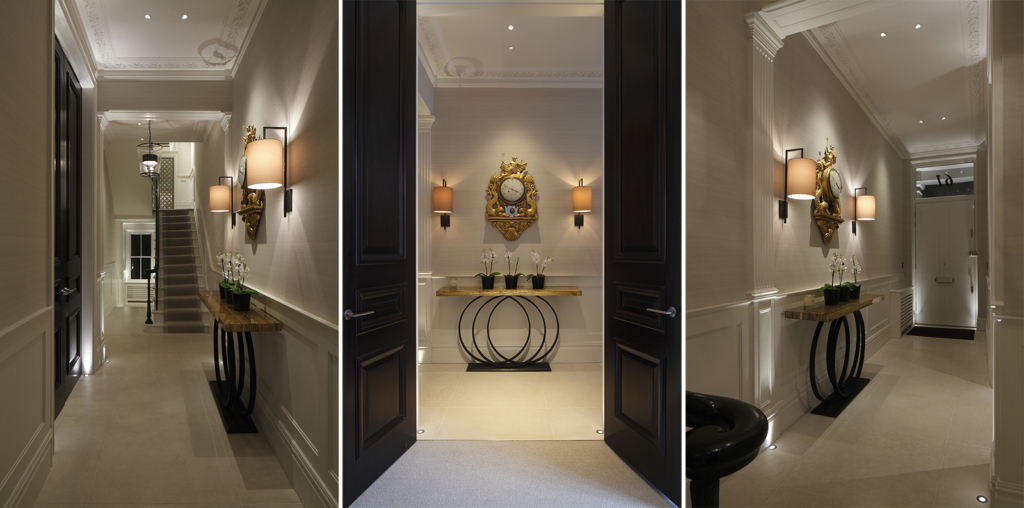
WHAT IS ARCHITECTURAL LIGHTING IN INTERIOR DESIGN?
Architectural lighting encompasses a combination of concealed lighting placed within the architecture or joinery. Downlights, uplights, LED strip lights, floor washers etc are our toolbox to create an interesting space, and they tend to be hidden amid the architecture. They are used both to emphasize materials and to provide general illumination. When integrated into joinery such as shelving, cupboards or architectural coffers, this light provides depth, areas of interest and layers of light around the room.
In an older house, you may have interesting plaster work that could be highlighted with architectural lighting, or feature columns which can be lit from below. Architectural lighting is useful too to lead your eyes through spaces into an adjoining room, along a corridor or up your stairs. Positioning a couple of uplights near the doorway or in window sills can frame your view out. You can also use architectural lighting outside. Spike lights shed a new light on trees and uplights can bring a new perspective to a textured wall. From inside, these outside architectural lights draw your eyes beyond the glass of your living space, adding depth.
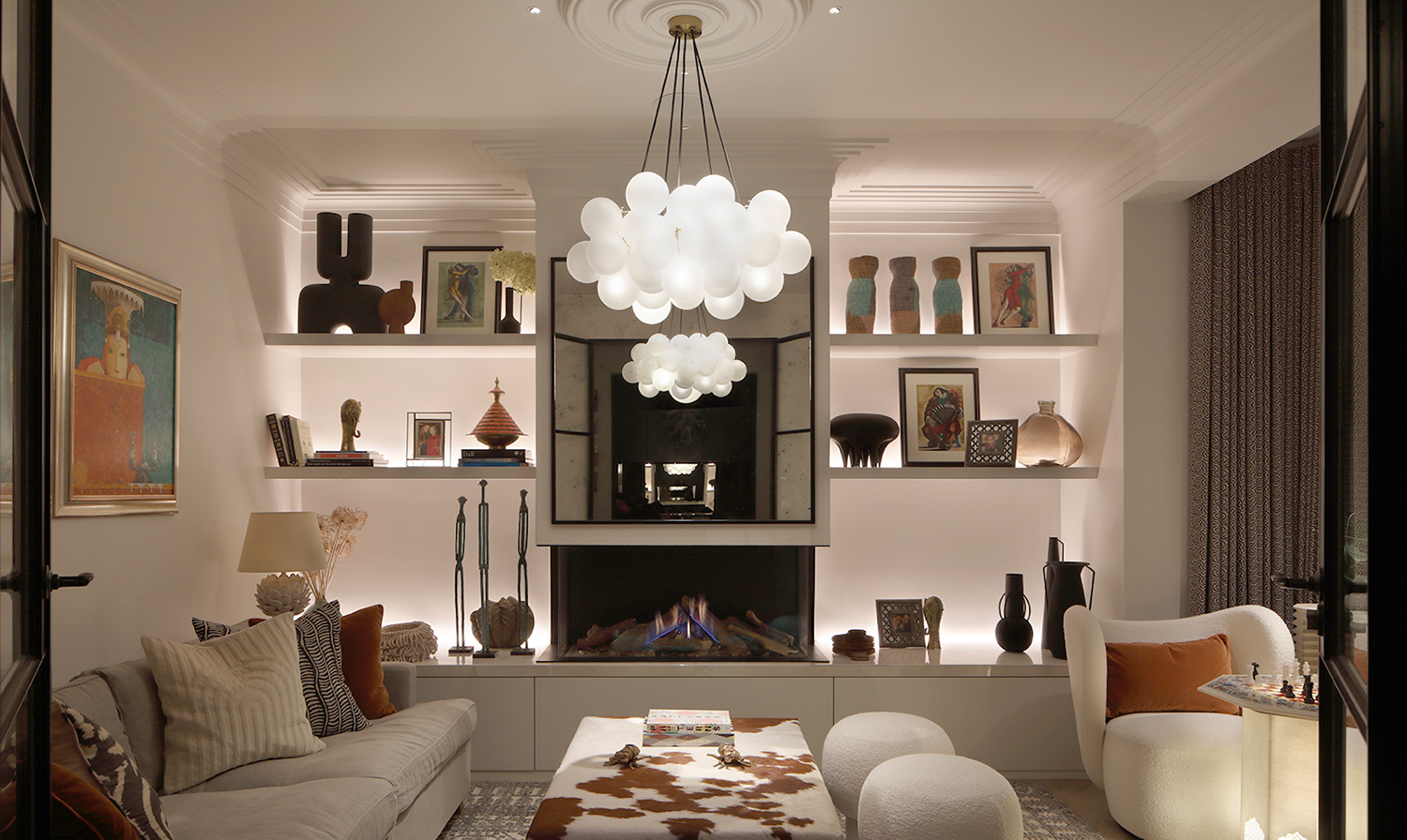
HOW DO YOU GET THE RIGHT MIX OF DECORATIVE AND ARCHITECTURAL LIGHTING IN YOUR INTERIOR DESIGN?
A successful and flexible lighting scheme will always have a mix of decorative and architectural lighting. Our job is to look at your space or plans, play with ideas and then plan layers of light in the space to achieve a balance of light. We’re looking for a happy mix of ambient light, accent light, and architectural lighting.
The wow factor is often achieved with hidden lighting details. Let’s head back to the kitchen: you may have downlights above the kitchen island, but adding an LED strip underneath adds layering and drama. It’s only providing low-level brightness, but at night this simple trick will alter the feeling of the space. Another example is a table with a banquette: if you add an LED strip at the back of the banquette to uplight the walls behind, you create a different atmosphere and impression of a wider space. If you have a coffer without light it will probably barely be noticed, but by adding an LED strip, you uplight the ceiling. This ceiling glow also makes the whole room feel much brighter by reflecting light back into the space.
WHAT QUALITY OF LIGHT DO I NEED FOR MY INTERIOR DESIGN PROJECT?
LED lights are what we use today, but the quality of every single light has a big impact on the space. We always think about the quality of colour temperature and colour consistency. For us, a high-quality fitting with a CRI (colour rendering index) above 90 will offer the most natural light. CRI is the value that indicates how well the light replicates the true colour of the object you’re highlighting. Reds, deep blues and deep greens look much truer when highlighted with a high CRI light.
If you’re using a few downlights in a space, particularly with white or neutral walls, you need consistency of colour temperature for all the lights. This is measured in Kelvins. Architectural lighting can have a slightly cooler colour of light – 2,700K, and decorative items such as table lamps, wall lights and pendants work better with a warmer colour – 2,400K. Our job is to create a harmony. You might use ceiling lights and uplights with 2700K and have your decorative on 2,400K. Then the LED strips inside the joinery could have a similar colour warmth to your decorative lighting.
WHEN SHOULD YOU HIRE A LIGHTING DESIGNER?
As soon as you and your interior designer or architect have a plan with furniture placement, call the lighting designers. Your final project will be stronger if we work with an interior designer or architect, so that fittings can be fully integrated into the final design. Sometimes on larger projects we’ll work with a project manager. We want to get the best result for your space and the earlier we are involved the fewer tweaks will need to take place later on.
Read more about our lighting design service and how it can transform your project. Alternatively learn more about how lighting can transform your project by attending one of our events.
